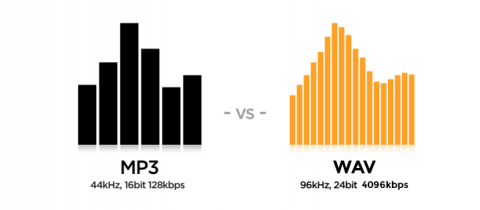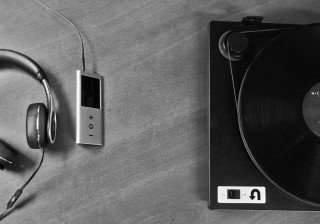MP3: The biggest music industry scam
In the digital age, music has undergone a seismic transformation. The days of hauling around stacks of vinyl records or CDs are long gone, replaced by the sleek and portable world of MP3s and streaming platforms. Now, people can carry their entire music collections in their pockets, summoning their favorite tunes with the mere tap of a finger. This unparalleled convenience has reshaped how we consume and enjoy music, opening up a world of possibilities for both artists and listeners.
Yet, beneath this glossy veneer of accessibility and convenience, there's a darker side to the digital music revolution. A growing chorus of critics contends that MP3s, in particular, have been nothing short of a scam since their inception. In this in-depth exploration, we'll dive into the controversial realm of MP3s, dissecting the arguments that label them a deception from three distinct angles: their impact on album pricing, distribution costs, and artist revenue. As we journey through these critical aspects of the music industry, we'll uncover why some music aficionados and industry insiders view MP3s as a double-edged sword, offering convenience at the cost of quality and fairness.
UNCOMPRESSED AUDIO FILES
PCM audio files represent analog signals digitally. Pulse Code Modulation (PCM) serves as the standard audio format for CDs, computers, and various digital audio applications. PCM stands out as an uncompressed, lossless audio format, frequently employed as the foundational data for crafting other audio file variants.
In essence, PCM faithfully captures the original sound recorded by microphones or pickups during music production. Notably, Microsoft and Apple have introduced their respective iterations: WAV and AIFF. The prevalent uncompressed audio file format is WAV, offered by Microsoft. WAV retains its status as an uncompressed, lossless format, essentially duplicating the source data verbatim. On the other hand, Apple's creation, the Audio Interchange File Format (AIFF), represents a standard for audio storage on Mac systems and also remains uncompressed and lossless.
COMPRESSED AUDIO FILES
MP3s represents a widely adopted audio file format renowned for its versatility. Operating as a compressed and lossy audio format, it shares commonalities with AAC (Advanced Audio Coding), a sophisticated variant embraced primarily within the Apple ecosystem. Both formats offer substantial reductions in file size compared to PCM, WAV, and AIFF.
MP3 and AAC formats share the capacity to compress audio to sampling rates spanning from 8kbps to 320kbps. Additionally, users have the flexibility to select sampling frequencies ranging from 8kHz to 96kHz. The conventional MP3 configuration employs a sampling rate of 128kbps at 44kHz. While this downsizing facilitates swifter file transfers and economizes storage space, it is not devoid of a trade-off, as some diminishment in audio quality is incurred when contrasted with lossless file formats.
SOME CRITICAL THINKING...
Now that you have gained a discerning understanding of the distinction between MP3 and WAV audio file formats, it is opportune to engage in contemplation and introspection on this matter. Allow me to provide guidance in this endeavor. The pivotal term that unveils the comprehensive truth underlying compressed audio formats is "sampling." In essence, this term elucidates the essence of MP3s - akin to when one endeavors to sample a cake, acquiring a mere taste of its myriad flavors. MP3s, in their essence, are akin to this act of sampling, as they solely capture a fractional segment of the original audio, presenting it to the listener in a concise and diminished form.
To draw a vivid analogy, consider the comparison to meringue. Meringue, at its core, comprises egg whites and sugar artfully aerated with an abundance of air, presenting a visually substantial appearance, while in reality, its substantive content remains limited. Similarly, MP3s adopt a comparable approach; they proffer the listener the same temporal duration of music, replete with its full complement of instruments and vocal elements. Yet, beneath this veneer, they are inherently insubstantial, akin to mere "air."
To underscore this point, let us consider the quantitative dimensions. A 60-minute composition in an uncompressed and lossless WAV format, characterized by its sonic fidelity, occupies approximately 650 megabytes of storage space. Conversely, a 60-minute MP3 file, typically encoded at a rate of 128 kilobits per second (kbps), amounts to a mere 55 megabytes in size. It is, therefore, imperative to question the fate of the remaining 595 megabytes. Regrettably, it must be acknowledged that during the conversion process, this substantial portion is excised and expunged from the file. In essence, it leaves us with a diluted semblance of the original composition, ultimately prompting contemplation regarding the veracity of our auditory experiences in an era where technology ostensibly augments our musical encounters.
IT'S TIME TO SELL "MUSIC"...
Consider a hypothetical scenario wherein one possesses the capability to deceive the global populace, inducing them to perceive PRODUCT X as an authentic and premium offering, subsequently prompting them to remunerate its complete market value, despite it having undergone a tenfold dilution. Would one ethically engage in such practices? Would one be inclined to market a vessel bearing the label "100% pure organic orange juice" while being fully aware that its actual composition comprises a mere 10% orange juice, with the remaining 90% constituting water? Would the assertion of empowering orange orchard proprietors be made while retaining a substantial 30% of the profits for the expansion of an exclusive business venture?
Remarkably, this analogy mirrors an analogous situation within the realm of the music industry. An industry in which consumers, in good faith, invest at full price for a product that is essentially a mere semblance of the authentic auditory experience. While the acquisition of a tangible, uncompressed, lossless-quality CD is deemed reasonable and ethically sound, the ongoing prevalence of MP3 purchases under the guise of artist support warrants scrutiny. The common narrative has been that purchasing MP3s contributes to artists' prosperity; however, the veracity of this claim is questionable. In reality, artists craft their albums with an aspiration for the uninhibited expression of their music, seeking to ensure that it is experienced in its purest form. Nevertheless, distribution entities such as Amazon, Apple, Spotify, and others adopt practices that compromise sound quality to maximize profitability, consequently retaining a substantial portion of the proceeds.
This paradigm reveals the intricate interplay between perception, deception, and profitability in the music industry, underscoring the subtleties that often elude conventional wisdom.
1. Albums Sell for the Same Price, but Quality is Lower
When MP3s first arrived on the scene in the late 1990s, they were hailed as a revolutionary way to store and share music digitally. Unlike physical formats like CDs and vinyl records, MP3s took up very little storage space and could be easily transferred over the internet. However, this convenience came at a significant cost – audio quality.
1.1 Lossy Compression
MP3s rely on a lossy compression algorithm to reduce the size of audio files. This compression technique achieves smaller file sizes by discarding audio data that the human ear is less likely to notice. While this may seem like a reasonable trade-off for the convenience of digital music, it results in a significant loss of audio fidelity.
1.2 Reduced Audio Fidelity
When music is encoded as an MP3, it loses a substantial amount of detail, particularly in the high and low frequencies. Audiophiles and discerning music lovers often notice a degradation in audio quality, with the music sounding flat and lacking the depth and richness of the original recording. This is especially evident when listening through high-quality headphones or speakers.
1.3 Paying the Same Price for Inferior Quality
Despite the compromised audio quality, consumers are still expected to pay the same price for MP3 albums as they would for physical copies or higher-quality digital formats like FLAC or WAV. This creates a scenario where consumers are essentially paying for a subpar product.
2. Costs Are Lower, but Consumers Aren't Benefitting
One of the key arguments made in favor of MP3s is that they drastically reduce distribution costs for music labels and artists. Physical distribution involves manufacturing, packaging, and shipping, all of which incur significant expenses. However, the shift to digital formats like MP3s has significantly lowered these costs, but consumers have not seen a corresponding reduction in pricing.
2.1 Cost Savings for Labels and Artists
Digital distribution eliminates the need for physical production and distribution channels, resulting in cost savings for labels and artists. Additionally, MP3s can be easily distributed worldwide through the internet, reducing the need for extensive marketing campaigns and physical distribution networks.
2.2 Consumers Continue to Pay Premium Prices
Despite the cost savings associated with digital distribution, the pricing of MP3 albums often remains on par with physical counterparts. This means that consumers are essentially subsidizing the music industry's cost savings while receiving no tangible benefits in terms of price reductions.
3. Artists Receive Much Less in Revenue
Perhaps the most significant aspect of the MP3 scam is the adverse impact it has on artists' revenue. While music labels and streaming platforms have profited immensely from digital music, artists often find themselves earning significantly less per stream or sale compared to traditional sales models.
3.1 The Streaming Predicament
Streaming platforms, which often rely on MP3 and other compressed audio formats, have become the primary way people consume music. While this has increased accessibility, it has also led to a significant decline in artists' income. Most streaming platforms pay artists a fraction of a cent per stream, making it incredibly challenging for musicians to make a living solely from streaming revenue.
3.2 The Devaluation of Music
The ease with which MP3s and streaming have made music accessible has also led to a devaluation of music in the eyes of consumers. With vast libraries available at their fingertips, listeners often expect music to be free or available for a nominal subscription fee, further diminishing artists' potential earnings.
3.3 Traditional Sales vs. Streaming Revenue
When comparing the revenue artists earn from traditional album sales to streaming, the discrepancy is glaring. Selling a physical or digital album directly provides artists with a more substantial upfront payment compared to the fraction-of-a-cent-per-stream model used by streaming platforms. As a result, artists are increasingly reliant on live performances, merchandise sales, and other revenue streams to sustain their careers.
Conclusion
In conclusion, while the advent of MP3s and digital music has undoubtedly ushered in a paradigm shift in the way we consume and disseminate music, it is crucial to acknowledge the substantive limitations accompanying these technological advancements. The assertion that MP3s might be construed as a form of consumer deception stems from a multifaceted argument, encompassing the notions that consumers are being charged the same price for a product of discernibly reduced quality, that diminished distribution costs have not translated into commensurate savings for consumers, and that artists are grappling with an increasingly diminished share of the revenue engendered by their artistic endeavors.
As patrons of the auditory arts, we bear a significant responsibility to remain cognizant of these multifarious issues and to explore alternative avenues for supporting the artists whose creations enrich our lives. This could manifest in conscientious choices, such as opting for higher-fidelity audio formats that do justice to an artist's vision, or actively participating in live performances and merchandise purchases to ensure that artists receive the equitable compensation they rightly deserve.
In a broader context, the evolution of the music industry has ushered in both transformative advantages and pressing challenges. As consumers, we wield the power to effect change, and it falls upon us to champion the cause of equitable compensation for the artists whose melodies, lyrics, and compositions resonate profoundly in our hearts and minds. By advocating for fair remuneration and eschewing compromises on quality, we can contribute to a more vibrant and sustainable musical ecosystem, one that ensures that the timeless art of music continues to thrive and flourish in our ever-evolving digital landscape.
Sources
1. Impact on Audio Quality:
a. "Understanding MP3 Compression" - A detailed explanation of how MP3 compression affects audio quality, available on the Stanford University website.
b. "The Audiophile's Guide to Understanding MP3 Compression" - An article by The Master Switch that explains the impact of MP3 compression on sound quality.
c. "MP3 vs. FLAC: Is the battle over?" - An article on CNET discussing the differences in audio quality between MP3 and lossless formats like FLAC.
2. Distribution Costs and Pricing:
a. "Digital Distribution vs. Physical Distribution Costs in the Music Industry" - A research paper by Dr. David B. Meckel that analyzes the cost differences between digital and physical music distribution.
b. "The Economics of Digital Music" - A report by the International Federation of the Phonographic Industry (IFPI) that provides insights into the economics of the digital music industry.
c. "The High Costs of Music Piracy" - An article on Forbes discussing the impact of piracy and digital distribution on music pricing.
3. Impact on Artist Revenue:
a. "The Trichordist" - A blog dedicated to issues related to artist compensation and digital music distribution, offering various articles and resources.
b. "How Musicians Make Money — Or Don't at All — in 2019" - An article on Rolling Stone that delves into the challenges musicians face in the digital age.
c. "Fairness Rocks" - A website dedicated to promoting fair compensation for artists in the music industry, featuring research and articles on the topic.
4. Music Industry Trends and Statistics:
a. "IFPI Global Music Report" - An annual report by the IFPI that provides comprehensive data and analysis of the global music industry, including digital distribution and artist revenue.
b. "RIAA Music Industry Shipment and Revenue Statistics" - Reports from the Recording Industry Association of America (RIAA) that offer insights into the financial aspects of the music industry.
5. Streaming Services and Artist Compensation:
a. "Spotify for Artists" - Spotify's official resource for artists, which includes information on how artists are compensated on the platform.
b. "The CRB's Webcaster Settlements" - Information on the Copyright Royalty Board's decisions regarding artist compensation for streaming services.
When you subscribe to the blog, we will send you an e-mail when there are new updates on the site so you wouldn't miss them.








